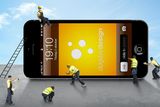Explainer: what is Apple’s new Vision Pro headset?
What does Apple’s new Vision Pro headset do? How much does it cost? And can a virtual reality device from Apple succeed where everyone else has failed? Here’s an explainer on what it is, when it’s available and what its drawbacks might be.
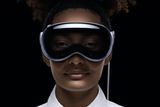
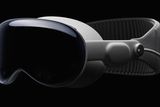
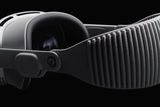
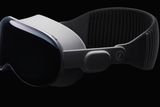
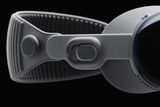
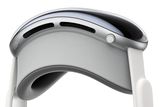
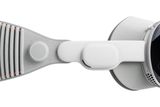
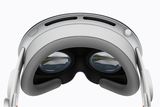
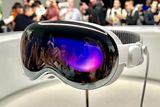
Today, Apple announced its first new product category in seven years. Here’s a quick summary of what the ‘Vision Pro’ headset is and what you need to know about it.
Hands on with Apple's Vision Pro headset. Photo: Adrian Weckler
What exactly is this Apple Vision Pro headset?
It’s a ‘mixed reality’ headset that combines virtual reality (VR) and augmented reality (AR). Looking like a large pair of ski goggles, it lets you watch movies, do computer work, join conference calls, play games, take photos and videos and other activities. It does this using very high resolution screens inside the headset. It also lets you use your hands without any external controllers due to 12 cameras and multiple sensors on the outside of the headset, while eye-sensors inside let you control some functions just by looking at objects.
The device is relatively light and is being described by Apple as an entirely new computing platform, alongside its Mac, iPhone, iPad and Watch platforms. To this end, Apple has launched a new operating system called VisionOS for developers, who will be able to create apps for it.
Apple's Vision Pro is lighter than other VR headsets
What does it do differently to other VR headsets?
The screen technology inside the headset is far better than what’s currently available on VR headsets. This means it would be much better to watch a movie on, or use as a work tool for virtual conferencing.
The crown on it also lets you modify how immersed into VR you want to be.
It’s also much lighter on your head than headsets from companies like Meta or Sony or HTC. This should make it more comfortable and ergonomically usable, especially if you’re at a desk. The tradeoff for this is that it has an external battery that connects to it via a cable, which could make it a little clumsy to wear if you’re walking around.
Are you supposed to use it with your iPhone or other Apple products? Or can you?
As a VR headset, it is — by definition — mostly a closed-off experience. On the other hand, it is designed to work with Macs, in particular, as an additional or complementary display. It supports Apple’s Magic Keyboard and Magic Trackpad, meaning you can set up a workspace or create a portable 4K display from your Mac into your Vision Pro wirelessly.
It does also have some slightly quirky socially-present features built in, including a screen picture of your eyes on the outside when you’re in company.
Is it expensive?
Yes, very. Apple says it costs $3,499, about the price of a high-specification MacBook Pro.
Why is it so pricey?
The parts and technology in it are a long way beyond what other headsets, such as Meta’s Quest Pro, currently offer. There’s also Apple’s higher margin, which it unashamedly slaps on.
The Vision Pro headset will start at $3,499 next year
Is Apple saying this is going to be the new iPhone?
Not quite. But it does believe that this is a major new computing category that will sit alongside Macs and iPhones in future. The company is said to have modest sales targets of between 150,000 and 250,000 for its first launch years while it tries to convince developers to create more services for it. On the other hand, 150,000 units sold at $3,499 would be $525m. While that’s nothing compared to the billions that iPhones, iPads, Macs, AirPods and Apple Watches make, it would still outperform almost all rivals from day one.
Are there any obvious drawbacks to it?
There’s the price, for a start. €3,500 instantly rules this out for most people when it launches. The external battery, while good for making the headset lighter, could be awkward to wear. And there are more general issues not specific to the Vision Pro, but to all VR headsets. Virtual reality also still makes a significant number of users – 10pc according to some studies – slightly nauseous. Apple claims to have virtually eliminated that by reducing the lag on the headset to 12 microseconds.
The Vision Pro headset uses an external battery
What other challenges does the headset have?
The high price creates a chicken-and-egg challenge for adoption among work teams. To get the real benefit from things like FaceTime and meetings, you need other people to have a headset, which is a tall order at this price.
More broadly, there’s the whole notion of wearing a headset itself. Since VR went mainstream over a decade ago, is has not captured the public’s imagination. There has been no killer function for it so far, with niche gaming being the most-used feature. The most-cited recent VR ecosystem, Mark Zuckerberg’s Metaverse, is widely regarded (so far) as a bit of a flop.
Are there any reasons to think that this might grow in popularity over time?
If anyone can make a struggling technology usable for the mainstream, it’s Apple. It took a niche wearable category – smartwatches – and transformed into something (Apple Watch) that now outsells any other watch of any kind. Also, there are still plenty of serious people who (still) believe that VR has a bright long-term future.
What’s my take?
Apple won’t let anyone try it yet, saying that it’s not ready for launch until 2024. So I can’t give a first impression yet.
I can see some obvious uses, some potential ones and some real issues. If you’re stuck on a plane for a long time and want to watch an Imax movie at a resolution nothing else can match, this could be amazing. You might also imagine that it would also be casually useful when you’re by yourself, either on the couch or in bed. And the work or productivity applications are definitely there, in theory; with resolution that good, editing photos and videos could be a totally different experience using a Vision Pro.
On the other hand, some of the use cases Apple is suggesting don’t sound great. No matter how good the cameras are for photography or videography, I really don’t like the idea of using it casually for shooting friends and family – it creates a slightly odd disconnect.
There are some critics saying that this could be a flop, as most VR headsets haven’t taken off. I’ve even seen suggestions that the company went through with the headset launch because it has invested so much time (at least four years) and money (over $1bn) on it. This seems unlikely. Apple is a serious company that invests for the medium term. It doesn’t launch things for the sake of it. Whatever the challenges and limitations that its headset, or the technology itself, might have, Apple clearly believes in it.

















